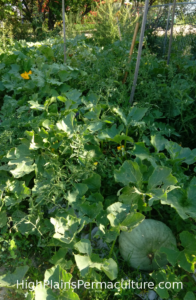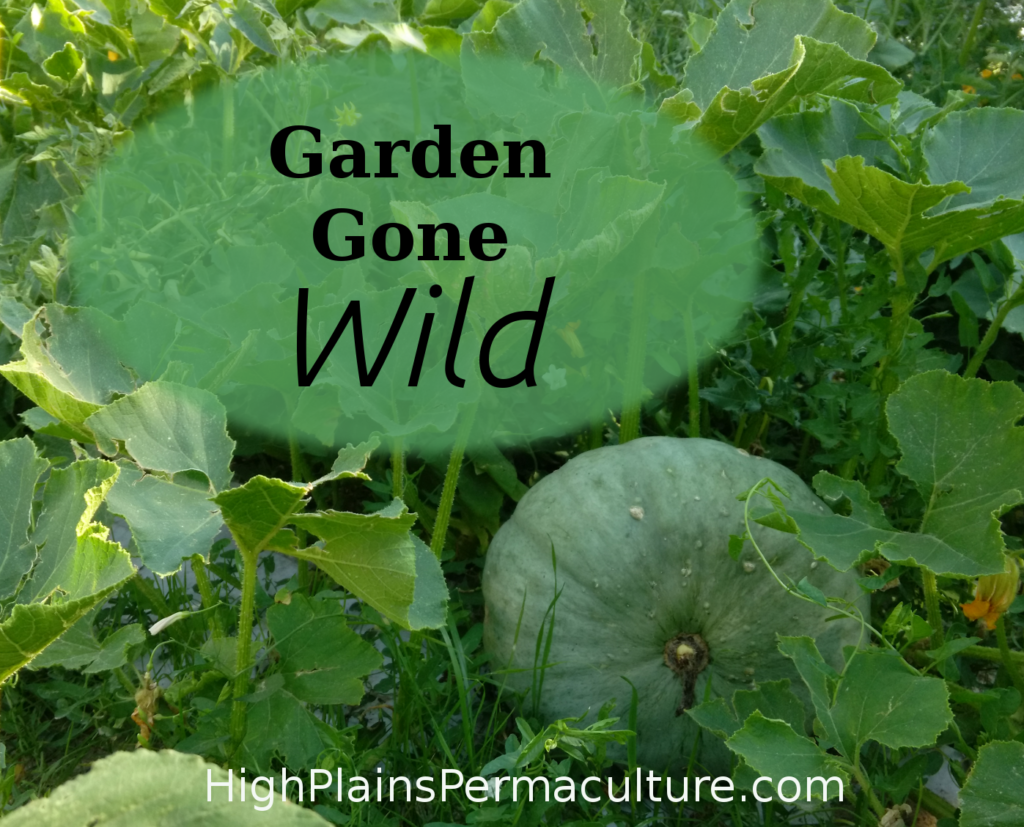This is not how I envisioned the garden to look at the beginning of the year.
I’m sure I’m not the only one to have that thought over the course of a growing season. What I had in mind was more of neatly trellised plants with a nice layer of mulch covering the paths, keeping all weeds and other growth at bay, or at least under easy control. Unfortunately this is what I have right now.
No clearly defined mulch path, pumpkin and squash runners going all over the tomatoes, and weeds everywhere. The runners are my fault, the trellises didn’t get built until the plants were well on their way with growth. The weeds are unfortunately well established -to the point of surviving the layers of wood chips and straw we’ve put down.
So what’s a person to do?
Some days I want to rip it all out and till it to dirt, others take chemicals to it, or even just walk away and forget it. But my indecisiveness has meant none of those have happened – yet. Instead I’m moving plants aside to pick the ripe tomatoes, cutting the thistle plants with scissors as I go, and getting ready to pick some pumpkins that are already ready. Apparently the plants haven’t been as annoyed that their growing area is a jungle as I have been. Which kind of begs the question- if the plants are still producing should I even care that things are a bit wild?
In this case I do.
Why? For a couple of points, but mostly because of the types of weeds- thistle and bindweed- and other plants that are growing.
- In the past we’ve had plants grow together and going every which way. Yes, you kind of had to pick your way across the path, but it wasn’t in effort to avoid plants AND thistle. Canadian thistle is a horrible plant to have nearby when trying to pick anything! It leaves you with scratches and microscopic slivers galore if you get too close. You definitely need gloves, or pliers which hubby likes to use, to remove it.
- The kids don’t care to go through the garden for fear of all the ‘pokies’. Then there’s the bindweed which climbs and chokes out the plants should I let it get too big. All of this leads to not real fun gardening or harvesting.
- As an indicator plant, Canadian thistle is said to thrive in very poor, deeply compacted soil. Given our thicket of thistle our soil must be the perfect example of poor compacted soil. Which isn’t great for continued gardening.
The good news is these things can be fixed. At least that’s what I keep telling myself. Probably not this year, but there is still enough time in the year to get started.
Here’s my plan of action.
- I plan to get a soil test done of the area so we can know for sure what nutrients we’re lacking without all the guesswork.
- Know thy Enemy. Researching the weeds/plants I find has helped me understand why they’re growing there and ways to stop their growth. For instance, I’ve been cutting off all the flowers from the thistle as they appear to keep them from going to seed. This doesn’t stop the growth from the roots and rhizomes in the soil, but it will save the ground from being covered with hundreds more seeds we don’t want!
- Increase the soil fertility. This will be based on the soil test results.
- Ground cover in the form of white plastic to heat the ground and hopefully kill any top layer roots or plants. Maybe spray a super-strong vinegar mix which will help kill the top growth.
That’s it for now. No super-bad chemicals yet. If you have had any success removing super-weeds and gaining control of your garden plot I’d love to hear about it!

